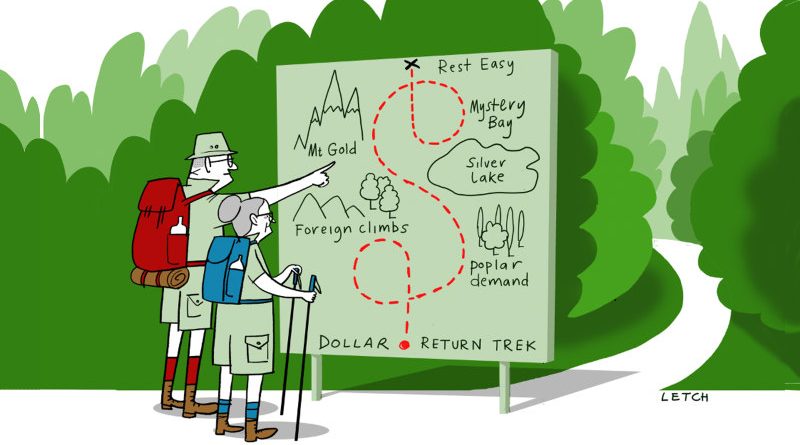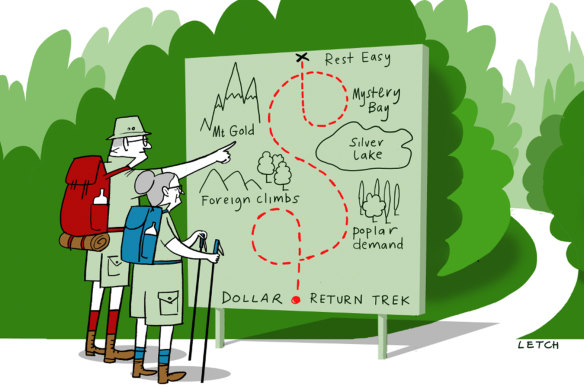The sweet spot: How to earn more while having less in retirement
Save articles for later
Add articles to your saved list and come back to them any time.
There’s this strange little anomaly in our retirement system that’s truly worth understanding. It’s the fact that people with less superannuation can actually end up earning more retirement income – just by knowing how to use the systems of retirement well in Australia.
It’s called the “sweet spot”, and it’s where both singles and couples with a lower superannuation balance leverage the age pension alongside their superannuation income stream to earn more in retirement income than someone with a far larger superannuation balance can at the same drawdown rates.
Finding the sweet spot isn’t easy, but it’s worth the climb.Credit: Simon Letch
This begs the question: is it worth the grind to become a self-funded retiree, when starting retirement with a more modest super balance can still secure a moderate income?
To break down how to find the sweet spot – or the amount of money to be holding in superannuation when you hit pension age and meet the conditions of release – there are three things we need to understand. This will help maximise your income from the pension and super combined without being penalised for having more.
The first thing you need to pay good attention to is the pension assets test thresholds for the full pension. This is at the heart of the sweet spot and every time the assets test thresholds change, the sweet spot changes.
Right now, the limits for the full pension are $451,500 for couples and $301,750 for singles. If you have more than this, your pension income is tapered. And the taper rate is the second thing you need to understand.
No matter which way you look at it, the sweet spot is a good thing for those with average superannuation balances.
The taper rate is triggered on every dollar earned over the assets test thresholds, deducting $3 from the fortnightly age pension for every additional $1000 beyond the specified asset threshold.
In practical terms, this would mean a person is penalised by $78 of fortnightly pension income (26 multiplied by $3) for each extra $1000 in assets. So if you were to have more in super, you would need to be earning a return of more than 7.8 per cent on those monies to offset the impact of the taper rate on the age pension.
Or, if you’re close to the assets test thresholds, you might find you earn more in total fortnightly income if you dispose of some of your hard-earned super, spending it on holidays, renovations, or quickly depreciating assets like cars and boats.
The third thing you need to understand is the impact of earning additional income on your bigger financial picture, particularly from working. If you are looking to the pension to deliver a significant portion of your retirement income, then you’ll want to understand the Pension Work Bonus, and the Pension Income Test Free Area which combined, from 2024, will offer you $11,800 in money you can earn from working before your pension income is reduced.
Let’s consider a straightforward example. Jenny and Jim, both 68 years old, have combined assets of $451,500 in superannuation and own their family home outright. Drawing the mandatory 5 per cent superannuation drawdown rate yields $22,575 from super.
Additionally, they receive a total of $42,988.40 from the age pension. In this scenario, their combined annual retirement income stands at $65,563.40, closely aligning with the amount deemed comfortable for retirement. They could also afford to earn an additional $11,800 from working without affecting their pension income at all.
In contrast, Alice and Bob, also 68, hold $1,200,000 in combined superannuation, fully own their home, and are ineligible for the age pension. Adhering to a 5 per cent drawdown rate, their annual income from superannuation amounts to $60,000.
While they have the option to withdraw more annually, doing so might require them to draw down on their capital when factoring in the inflation rate. As they do not get the pension, the amount they could earn from working is not really limited.
And to illustrate this for single people, Mary is 68 years old and has $301,750 in superannuation and owns her own home outright. Drawing the mandatory 5 per cent superannuation drawdown rate yields $15,087.50 from super. Additionally, she receives a total of $28,514.20 from the age pension. In this scenario, Mary’s annual retirement income stands at $43,601.70.
Now, if Mary decides to explore the potential benefits of additional income from working, she should consider the Pension Work Bonus and the Pension Income Test Free Area. From 2024, these combined offer her $11,800 in money she can earn from working before her pension income is reduced.
Let’s compare Mary with Susan, also 68 years old, who has a larger superannuation balance of $750,000 and fully owns her home, making her ineligible for the age pension.
Adhering to a 5 per cent drawdown rate, her annual income from superannuation amounts to $37,500. While Susan has the flexibility to withdraw more annually, doing so might require her to draw down on her capital, especially considering the impact of inflation.
Deciding between a self-funded or sweet spot retiree strategy is no easy task. Some opt for an early ‘burn-off’ of retirement savings, a strategy potentially encouraged by the government through the taper rate introduced in 2017. This allows retirees to consciously aim for the sweet spot at some point during their retirement.
For others, it’s a contentious issue that after decades of saving to be self-funded, they end up with a lower income than those who leverage taxpayer funded benefits.
No matter which way you look at it, the sweet spot is a good thing for those with the average superannuation balances in Australia of between $150,000-250,000 per person, or $300,000-$500,000 as a couple. It’s a financial strategy worth asking an adviser about.
Bec Wilson is the author of the bestselling book How to Have an Epic Retirement and host of the new podcast Prime Time with Bec Wilson. She writes a weekly newsletter at epicretirement.net.
- Advice given in this article is general in nature and is not intended to influence readers’ decisions about investing or financial products. They should always seek their own professional advice that takes into account their own personal circumstances before making any financial decisions.
Expert tips on how to save, invest and make the most of your money delivered to your inbox every Sunday. Sign up for our Real Money newsletter.
Most Viewed in Money
From our partners
Source: Read Full Article



